"Did you know that mastering just a handful of billiard strategies can double your win rate in less than a month? Unleash your pool prowess by learning the secrets shared by championship players worldwide."
Why Billiard Strategy is the Key to Consistently Win at Pool
-
Faster wins, smarter plays: The role of billiard strategy
-
Avoiding the most common strategic blunders in pool
-
Practical examples of how strategy shifts the outcome of your game
Billiard strategy is the backbone of consistent wins for any pool player. While raw skill and practiced technique are essential, it's the intelligent application of strategy that changes the nature of the game—helping you win faster and with less effort. By anticipating the best shot sequences, managing the cue ball with precision, and thinking two or three shots ahead, you maximize your odds of victory in every frame. A fundamental pool error that even advanced technique can't make up for is ignoring the importance of shot planning.
Common strategic mistakes, such as focusing solely on easy shots or neglecting position play, often result in unnecessary misses or leaving your opponent with opportunities to seize control. By consciously avoiding these pitfalls and learning to recognize high-percentage options, you reduce the risk of costly errors. Smart billiard strategy empowers you to make subtle adjustments based on table layout—taking into account ball clusters, break shot results, and defensive opportunities—so that each move brings you closer to your winning shot.
For example, imagine a scenario where you can attempt a difficult bank shot or play a straightforward safety. The good player chooses the latter, forcing their opponent into a tougher sequence and greatly increasing their chances to win the game. As you develop your understanding of billiard strategy, such practical decisions will make the difference between victory and defeat each time you play pool.

What You’ll Learn About Billiard Strategy and Improving Your Pool Skills
-
Fundamental billiard strategies every pool player needs
-
Techniques for professional-level cue ball control
-
Advanced tips for break shots and table management
-
How to choose the right pool cue for your playing style
This guide is designed to transform how you play pool, whether you're a beginner eager to strengthen your foundation or a seasoned player looking for advanced technique. You'll uncover fundamental strategies that pave the way for smarter, more consistent play, and unlock the secrets of cue ball mastery—a critical element that sets champions apart. By mastering pool cue selection, adopting powerful break shot tactics, and fine-tuning your approach to every pool table layout, you'll steadily build the skills to improve your pool game in every session.
You’ll also explore game-defining tips on shot sequencing, defensive play, and aiming line mastery, all detailed through practical drills and expert recommendations. This comprehensive resource gives you an edge not just in technical execution, but also in mental strategy—sharpening your decision-making on the felt. As you integrate these elements, you'll quickly notice how your ability to win the game improves, making every match more enjoyable and rewarding.
Whether you're training for tournament competition or playing pool at your local club, these lessons are structured to help you progress. Invest time in each section and practice the drills consistently to see measurable improvement in your pool skills. By the end, you’ll be equipped with actionable routines required for mastery at any level of play.
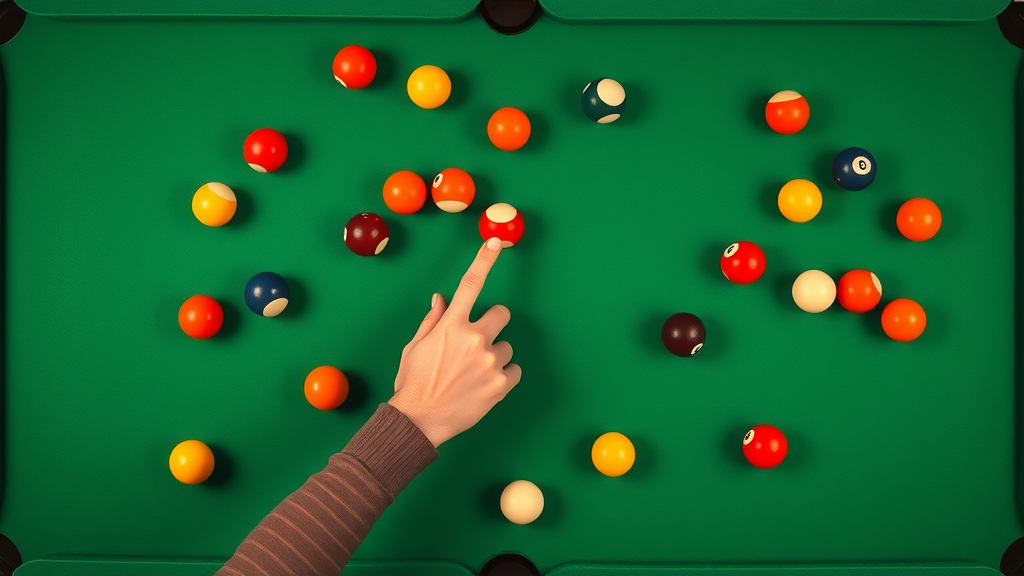
Core Principles of Billiard Strategy for Every Pool Player
Understanding Table Layout and Ball Patterns for Strategic Play
-
Reading the pool table and identifying high-percentage shots
-
Mapping patterns to maximize cue ball position
The first step to applying powerful billiard strategy is learning to effectively read the pool table. Each table presents a unique arrangement—a puzzle that offers multiple solution paths. Expert pool players begin by scanning for clusters, open lanes, and ball groupings that can be targeted in efficient sequence. This ability to identify high-percentage shots comes with experience and is key to making decisions that set up future shots, rather than limiting your position options.
Mapping out patterns is crucial as it helps plan not just for your next shot, but for several moves ahead. Strategic pattern play means always positioning the cue ball so that you leave yourself with simple, easy shots—minimizing awkward angles or tough banks. By visualizing two or three shots in advance, you can thread a path through the rack that maintains control and predictability, giving you an advantage over opponents who only think one shot at a time.
A practical tip: before striking, pause to plan your run-out based on the current ball distribution. Prioritize clearing balls that open access to others and avoid unnecessarily difficult shots if easier alternatives will build momentum. Mastering table layout and ball patterns is a foundational skill every pool player must develop on their journey toward advanced billiard strategy.
Mastering Cue Ball Control: The Building Block of Billiard Strategy
-
Techniques to manipulate cue ball spin and positioning
-
Practical drills to develop cue ball mastery
Cue ball control is regarded as the cornerstone of advanced billiard strategy. The ability to position the cue ball precisely after each shot transforms difficult racks into manageable ones and allows you to string together winning sequences. By mastering both speed and spin control, you’ll increase your chances of creating easy shot opportunities and avoid getting stuck in defensive positions. Good players intentionally use topspin, backspin, and side spin to guide the cue ball’s path, opening new angles or slowing it for controlled stops.
To improve your pool skills, dedicate time to drills focusing solely on cue ball manipulation. A common exercise is the “draw and follow” drill: place the cue ball at table center and shoot into different pockets, practicing rolling it forward (follow) or drawing it back (spin) after impact. Repeat this using varying strengths and spins, aiming for consistent results. Another effective practice is to try landing the cue ball in pre-designated zones after potting an object ball, a routine that hones your ability to control both power and placement.
Remember, developing strong cue ball control isn’t achieved overnight. By focusing on shot execution and consciously applying spin, you’ll make serious strides toward advanced technique. With practice, the cue ball will consistently end up right where you need it—making the next pool shot simpler and boosting your overall pool game performance.
|
|
|
|
Comparison of Billiard Techniques |
|
Technique |
Focus |
Best For |
Common Mistake |
|---|---|---|---|
|
Cue Ball Control |
Spin, speed, positioning |
Setting up easy shots |
Overhitting/underrunning position |
|
Shot Selection |
Choosing shots by probability |
Maximizing consistency |
Choosing flashy, low-percentage shots |
|
Defensive Play |
Safety, blocking, snookering |
Stalling opponent’s strategy |
Neglecting cue ball distance or escape routes |
Fundamental Techniques: Building Blocks of Improve Your Pool Game
Forming the Perfect Closed Bridge, Open Bridge, and Rail Bridge
-
Step-by-step guide to closed bridge technique
-
Using open and rail bridges to your advantage in various table scenarios
Your bridge hand forms the literal foundation of every shot. A solid closed bridge is favored by pool players for shots needing stability and precise cue control. To form it: rest your hand firmly on the table, create a loop with your index finger around the pool cue, and anchor your thumb tightly, creating a channel for smooth movement. This grip helps hit the cue ball with maximum accuracy, crucial for delicate spin or power shots when aiming line precision is essential.
The open bridge, by contrast, is easier to learn and is used on both short and long shots, especially in congested areas. For the open bridge, simply rest your hand palm-down, spread your fingers, and create a groove between your thumb and knuckle for the cue to glide through. It gives added visibility and is great for shots requiring a gentle touch or when shooting off the pool table rail. Mastering the rail bridge comes into play when the cue ball is close to or on the cushion—position your hand flat against the rail, with your thumb up and fingers creating a 'V' notch for the cue. With practice, switching between bridge types will allow you to adapt to any table challenge and improve your pool game dramatically.
Remember: a consistent bridge provides not only mechanical stability but sets up the rest of your stroke for success. Making the mistake of an unstable or wobbly bridge leads to inaccuracy and missed pool shots, so drill each bridge style until it feels second nature.
"Great pool players focus on consistency—every shot, every bridge, every angle matters." – Pool Champion
Aiming Line Mastery for Accurate Billiard Strategy
-
Sight lines that pros use for perfect placement
-
Aiming drills that transform your approach
A key element of billiard strategy is mastery of the aiming line, the imaginary trajectory extending from your cue ball to the target object ball and onwards to the pocket. Professional pool players use this invisible guideline to ensure that each stroke is aligned perfectly with their desired outcome. Practicing with these sight lines enhances shot accuracy, giving you more confidence when facing tough angles.
To develop this pool skill, try the ghost ball aiming drill: picture a “ghost” cue ball that would contact the object ball at the required angle, and align your physical cue ball to strike that exact spot. Another powerful exercise is to trace your cue along the imaginary aiming line before each shot, checking your alignment and stance in the process. Over time, these routines will transform your shot setup—reducing errors where you hit the cue ball inaccurately or misjudge the path.
Ultimately, accurate aiming line skills unlock the ability to play pool with the precision of a champion. Every shot choice becomes more deliberate and every position play more reliable, propelling you closer to strategic dominance over your opponents.

Perfecting Your Pool Cue Play: The Science of Shot Execution
-
Selecting the best pool cue based on your style
-
Balancing grip, weight, and tip for optimal shot accuracy
Your pool cue is your most important tool, so using the right one for your style is non-negotiable for improving performance. When selecting a pool cue, pay attention to factors like weight, length, balance point, and especially the tip type. Lighter cues favor finesse shots and speed, while heavier cues provide more power. The grip texture and diameter should fit your hand comfortably to prevent fatigue and support a consistent stroke.
The tip—soft, medium, or hard—will dramatically affect how the cue ball responds to your cueing. Soft tips absorb more shock and allow greater control over spin, which is essential for advanced technique and cue ball mastery. Medium tips offer a balance, while hard tips give more direct feedback but less spin potential. Experiment until you find a combination that complements your game; most experienced pool players own several cues for different table conditions and shot demands.
To further optimize your pool cue play, periodically check that the ferrule, tip, and shaft are in good condition. Invest in minor upgrades like a higher-quality tip, a new wrap, or a low-deflection shaft as you progress. Every small improvement translates to better control and shot execution, making it easier to win the game at higher competitive levels.

Break Shot Excellence: Seizing the Advantage from the First Strike
-
Strategizing the break shot for maximum spread
-
Positioning after the break: what professional pool players do differently
The break shot is your first opportunity to take control of a game of pool, and a precise, well-planned break establishes your dominance on the table. Rather than relying on raw force, smart billiard strategy involves reading the rack setup, choosing exactly where to hit the cue ball, and delivering the break with both power and a controlled follow-through. Positioning your front foot and body for stability ensures you drive maximum energy into the rack without sacrificing accuracy.
Elite pool players take special care to control the cue ball after the break, aiming to keep it near the table center for better access to subsequent easy shots. Always plan where you want the cue ball to finish—not just how hard to hit the cue. Practice with various spots on the pool table and different rack tightness to see what gives the best spread and least risk of a scratch. Many top competitors study their post-break layouts like an encyclopedia of pool shots, sharpening their ability to act on opening opportunities.
Perfecting your break shot gives you a major psychological and tactical advantage, as your opponent will have fewer chances to respond if you clear the table efficiently from the start. Make the break shot a signature weapon in your arsenal to routinely clinch the win the game within fewer turns.
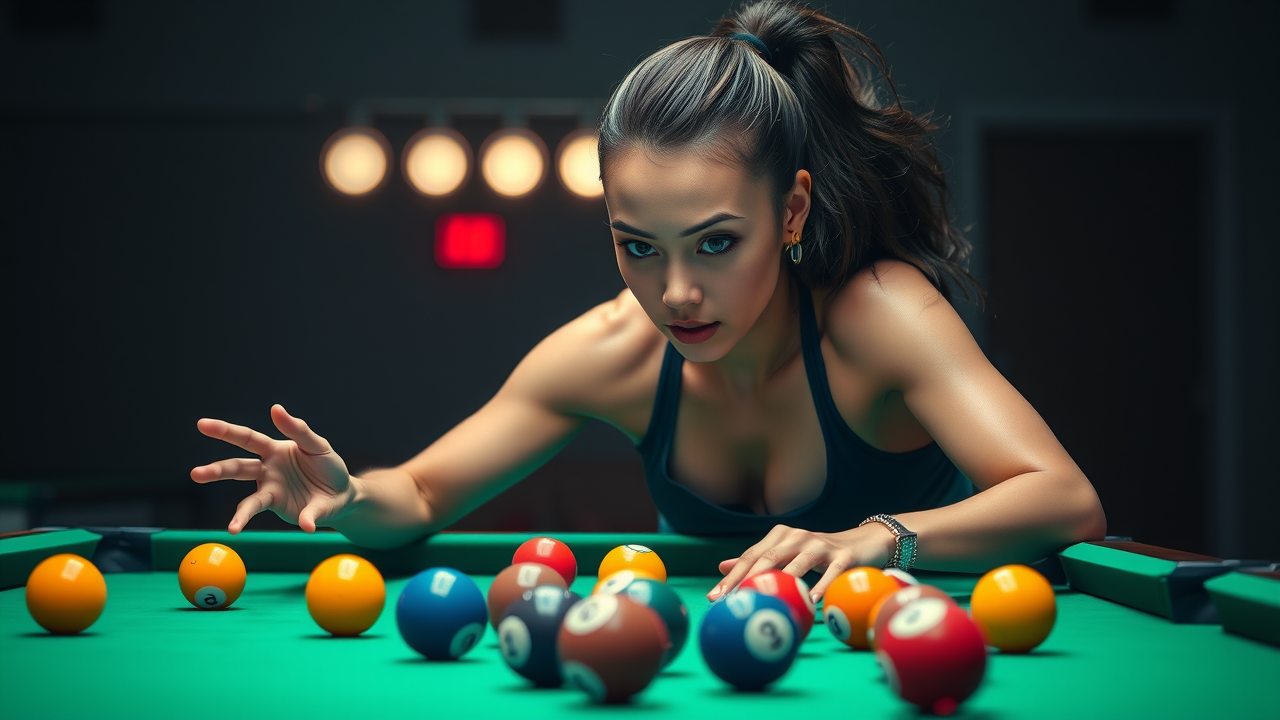
Advanced Billiard Strategy: Defensive Play and Game Management
Safety Shots and Tactical Defense in Pool
-
When to play offense vs. defense
-
Setting up safety shots to stifle your opponent
Defense is an often overlooked but absolutely critical component of sophisticated billiard strategy. While attacking play is exciting, the ability to switch to defense by executing safety shots can tilt the odds in your favor, especially in tournaments or close matches. Knowing when to play pool aggressively and when to “duck” your opponent with a safety requires sharp judgment and an understanding of cue ball placement.
A good defensive pool player recognizes opportunities to lock an opponent into difficult positions—blocking their next easy shot or forcing them to attempt risky banks or kicks. Executing a strong safety shot typically involves snookering, where you use object balls to obscure the cue ball’s direct path to any legal target. Not only does this divert the flow of a match, but it often turns the tables by creating openings when your opponent inevitably makes a mistake trying to escape.
Integrating tactical defense into your overall billiard strategy ensures you always have an option for when the offensive path looks uncertain. As you practice both offensive and defensive plays, you’ll become a more complete, unpredictable, and dangerous pool player.
Controlling the Flow: Sequencing Shots for Checkmate Positioning
-
Advanced run-out strategies
-
Eliminating risky shots and reducing error
The highest levels of pool and billiard competition are often decided by who sequences their shots with the greatest foresight. Instead of focusing solely on potting balls, advanced players develop run-out strategies—planning sequences that systematically clear balls while maintaining optimal cue ball control. The aim is to make each shot as easy as possible and transition seamlessly from one successful shot to the next.
This proactive approach reduces the likelihood that you’ll get stuck with a low-percentage or awkward shot, while maximizing your margin of safety in case of minor errors. When approaching a complex table layout, analyze which groups of balls “open up” other areas of the pool table as you clear them. Avoiding risky or low-probability shots when you have safer alternatives is the mark of a strategic, mature pool player. By reducing unnecessary Risks, you consistently improve your pool results and edge closer to breaking through your skill ceilings.
As you build your own run-out encyclopedia of pool shots, study advanced matches (including video encyclopedia of pool archives) for inspiration and analysis—learning directly from the world’s best how to maintain control and win even under pressure.
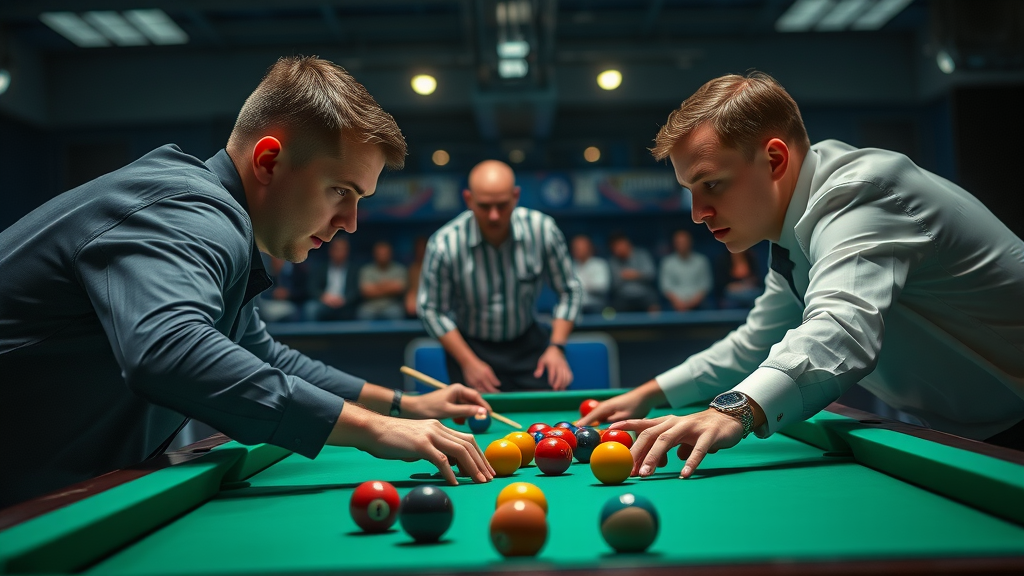
Essential Equipment: Pool Table Types, Pool Cue Specs and Upgrades
-
Different pool table materials and their effect on game consistency
-
Pool cue upgrades for improved performance
The type of pool table you play on can have a significant effect on your performance. Tables made of high-grade slate offer unmatched consistency and level playing surfaces, making them the preferred choice for professional and club use. Cheaper tables, made from wood or synthetic materials, may warp over time—altering ball roll and bounce—and can make it difficult to develop fundamental pool skills. Pay attention to felt type, cushion responsiveness, and pocket size, as each can change the strategy required for a win the game.
Similarly, pool cue upgrades, from a new tip to an advanced, low-deflection shaft, make a visible impact on your shot-making capability. Many pool players invest in custom grips, balancing weights, or joint types to match their style. As your pool skills improve, consider adding secondary cues for break shots and jumps, or a case to streamline your practice routines and protect your investment.
Ensuring your equipment is matched to your objectives—and kept in top condition—sets the stage for you to play pool at your best, developing both strategy and technique with fewer external obstacles.
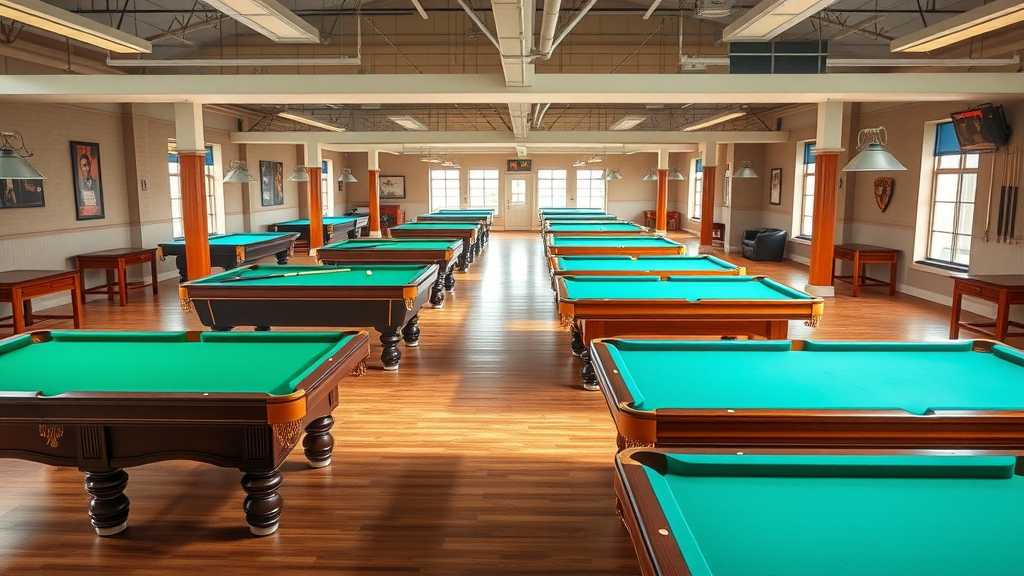
Common Mistakes and How to Avoid Them in Billiard Strategy
-
Top 7 pitfalls even experienced pool players make
-
How to diagnose and correct alignment errors
Even seasoned pool players can make the mistake of reverting to bad habits under pressure. The seven most common pitfalls are: poor stance or grip, rushing shot routines, ignoring the importance of the aiming line, mishandling the cue ball, failing to plan several shots ahead, overcommitting to offensive plays, and neglecting defensive options. Addressing these issues head-on is the quickest way to improve your pool strategy and consistency.
Diagnosing and correcting alignment errors is a matter of self-awareness and deliberate practice. Record your matches or practice sessions to catch subtle cues of incorrect posture, sight alignment, or stroke path, and verify whether your cue is following the aiming line accurately. Most issues trace back to small lapses in fundamentals, such as holding the cue too tightly or incorrect foot positioning—errors that can easily creep in during high-stress games. Build a checklist and review it regularly to reinforce sound technique.
Finally, cultivate the habit of pausing after every missed shot to analyze what went wrong. By targeting your practice towards your weakest areas, you’ll continually refine both your fundamental pool and strategic abilities, moving ever closer to your goal of playing like a champion.
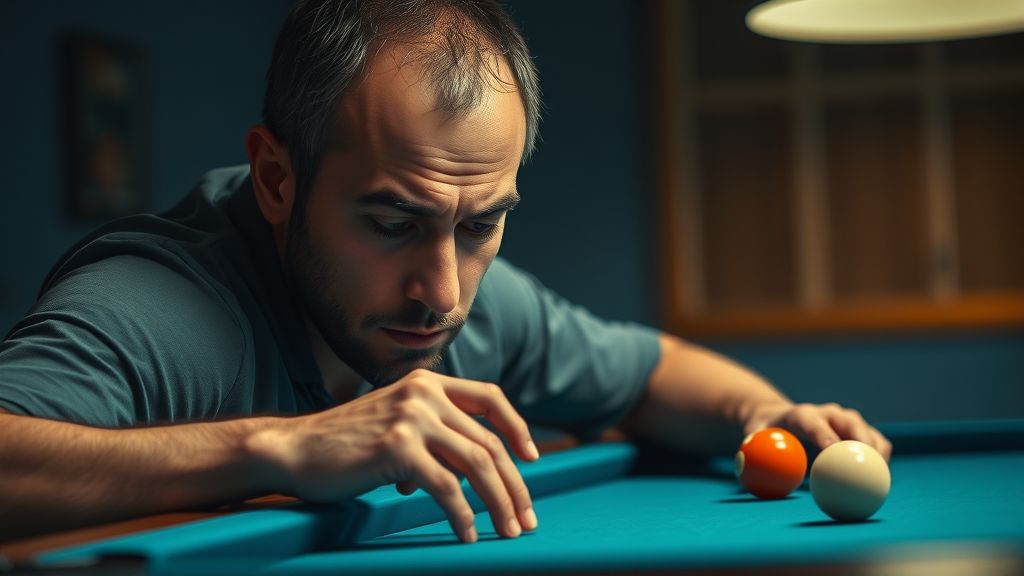
Roadmap: How to Play Pool Strategically for Every Skill Level
-
Blending billiard strategy with skill practice for consistent win improvement
-
Customizable routines for advanced, intermediate, and beginner players
Whether you’re just starting to play pool or looking to break past mid-level plateaus, a balanced mix of technical drills and strategic thinking is essential for steady improvement. Beginners should focus on mastering basic shot execution and bridges, but start integrating pattern recognition and simple strategy as soon as possible. For intermediates, advanced drills—like controlled run-outs and defensive escapes—should be added, alongside regular match analysis to spot recurring mistakes.
Expert players benefit from crafting their own pre-shot routines, solidering their command over aiming line techniques, and reviewing video encyclopedia of pool content to uncover new strategic openings. At every stage, regular practice with focused goals, whether through solo drills or friendly competition, ensures your pool skills stay sharp and evolving. Track your progress, set milestones, and always review which elements of your billiard strategy need further refinement.
The important takeaway: consistency beats intensity. Don’t try to master everything at once — instead, choose foundational skills or strategies and drill them until they become automatic. This layered approach not only accelerates improvement but cements good habits for your lifelong pool journey.

People Also Ask About Billiard Strategy
How to play pool strategically?
To play pool strategically, focus on positioning the cue ball after every shot, plan your run-out routes in advance, and always weigh risk versus reward before committing to a difficult or flashy shot. Mix in defensive plays when offense isn’t viable, and study your opponent’s tendencies for possible advantages. Developing a mental checklist and practicing consistent routines will help reinforce these habits until they become second nature.
What is the 30 rule in pool?
The 30 rule in pool is a guideline used for estimating cue ball deflection after a shot: when striking a full, center-ball hit, the cue ball will travel at a 30-degree angle from its original line, provided no spin is applied. Understanding this rule helps you predict where the cue ball will go, enhancing your ability to plan position shots and avoid accidental scratches or poor setups on the pool table.

How to be more accurate in billiards?
Boost your accuracy by refining your pre-shot routine: check your stance, ensure your dominant eye is aligned with the aiming line, and practice smooth, even strokes. Use aiming drills (such as ghost ball and parallel aiming) to reinforce core mechanics and pay close attention to grip and bridge stability. Recording your sessions for self-review is another powerful way to catch and correct habits that sabotage shot accuracy.
What is the best pool technique?
The best pool technique is one that matches your personal style while adhering to core fundamentals. Consistency in bridge formation, body alignment, and smooth follow-through create reliable shot-making, while adaptive strategies for both offense and defense maximize your overall win rate. Emphasize control, not just power, and prioritize cue ball management above difficult pot attempts.
Master Billiard Strategy: Expert Tips to Improve Your Pool Skills
-
Visualize every shot and plan two steps ahead
-
Master all bridge techniques for various table situations
-
Train with purpose and set measurable goals
-
Regularly analyze mistakes and adjust your billiard strategy
-
Study top pool player matches to observe advanced tactics
|
|
|
Summary Table: Quick Reference Tips to Improve Your Pool Game |
|
Tip |
Benefit |
Practice Frequency |
|---|---|---|
|
Bridge Mastery |
Stability and shot accuracy |
Start every session |
|
Cue Ball Drills |
Cue ball placement control |
3×/week |
|
Break Shot Reviews |
Openers for table management |
Weekly |
|
Tactical Defense Practices |
Prevent opponent’s runs |
Monthly |
|
Video Analysis |
Spot mistakes, analyze pros |
Ongoing |
Frequently Asked Questions: Billiard Strategy and Pool Skills
-
How often should you practice different billiard strategies?
-
Are custom pool cues worth the investment for casual pool players?
-
What mental techniques help maintain focus during competitive play?
Practice new billiard strategies at least twice a week, focusing on one or two aspects (like cue ball drills or defense) until they become consistent. Custom pool cues can be a great investment for those who play often, as they offer a personalized feel and better performance—though casual players may do well with quality standard cues until ready to upgrade. For focus, pre-shot visualizations and deep breathing routines physically calm nerves while mentally setting up each play, making it easier to perform under match pressure.
Take Your Place at the Table: Become a Master of Billiard Strategy
-
Apply the principles learned here each time you play pool
-
Track your progress and challenge yourself with new billiard strategies
-
Commit to continual improvement and watch your win rate soar

 Add Row
Add Row  Add
Add 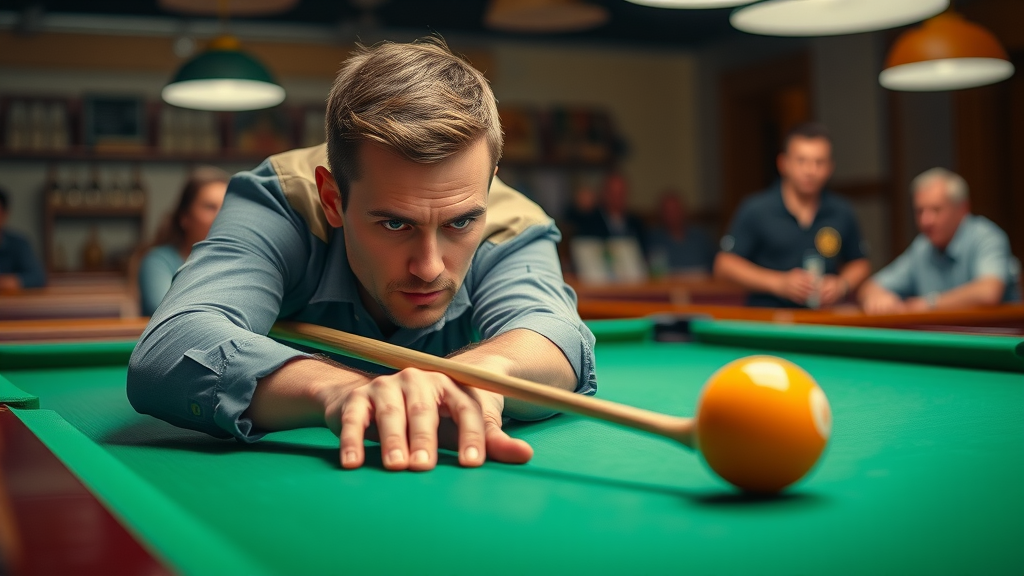
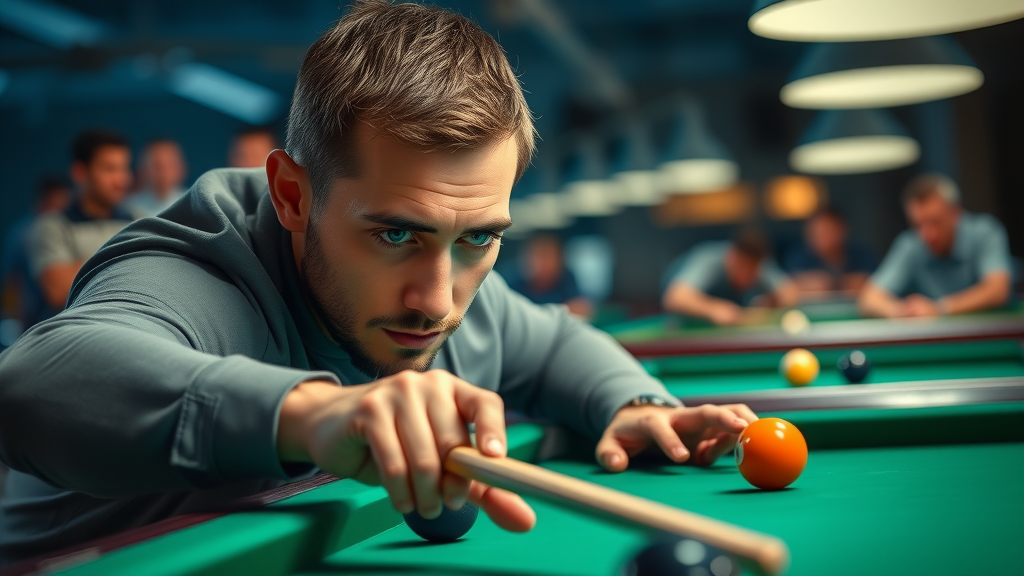

Write A Comment